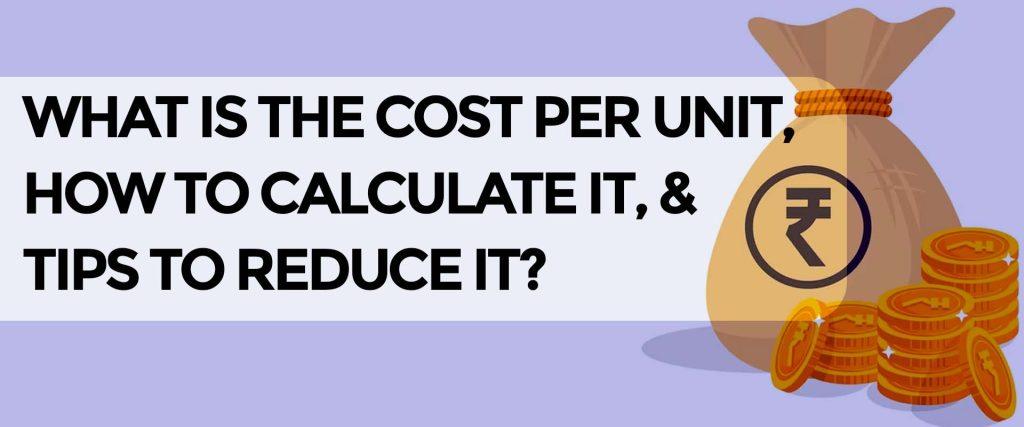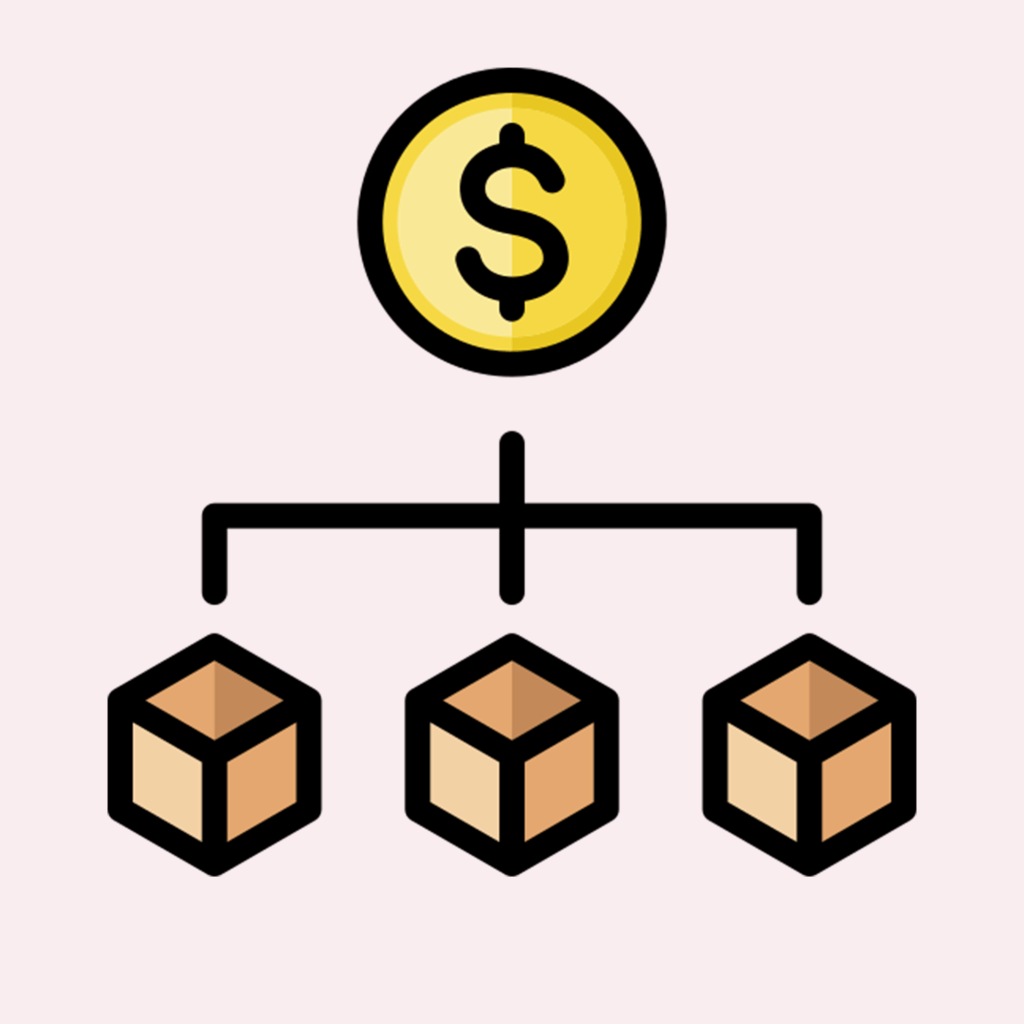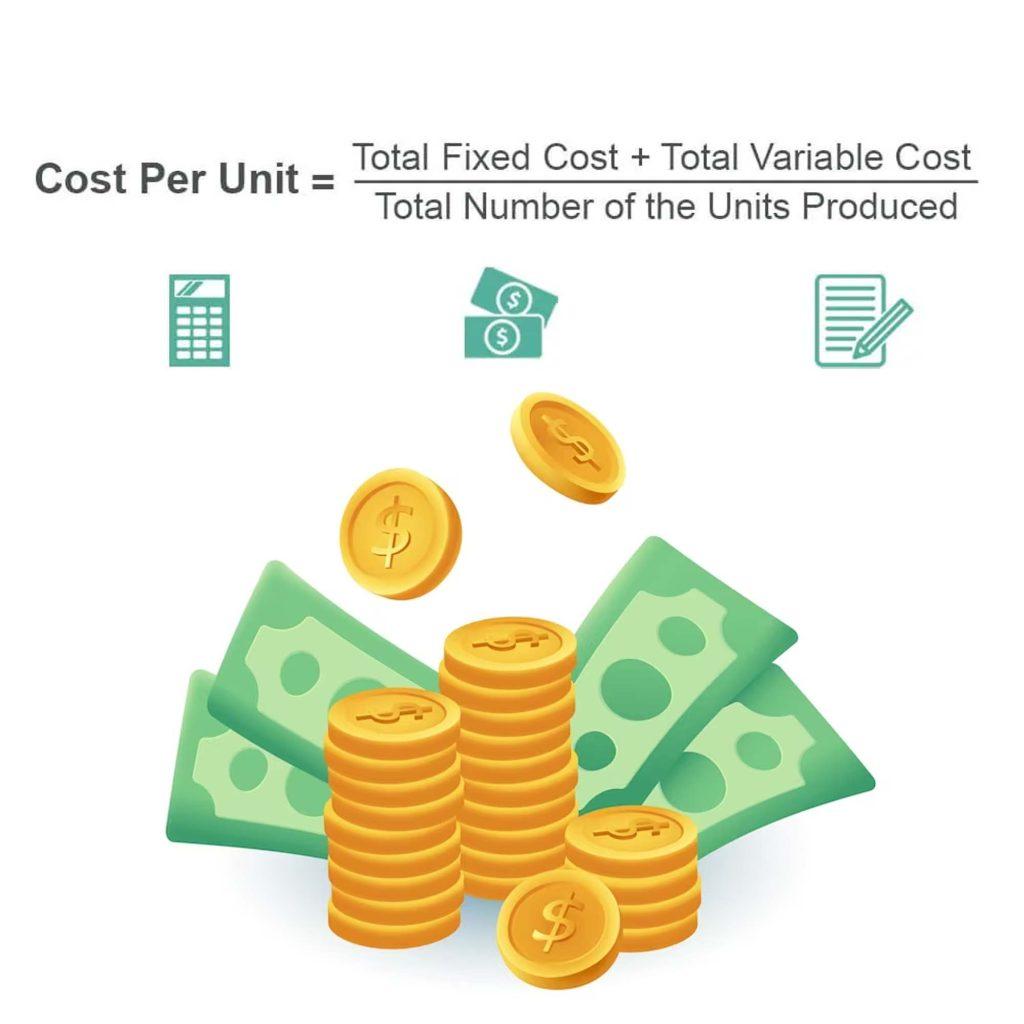
What is cost per unit? How to Calculate it? & Tips to Reduce It
Companies frequently calculate if their business is profitable to determine if a business is profitable, companies constantly calculate if their product costs are lesser than the price of each product unit they retail. By knowing how to apply the cost per unit figures for this purpose, you can shape product prices and meet your sales aims. After you read this blog you will understand,” What’s a cost unit?”, its importance, and how to compute it.
What is cost per unit?

Cost Per Unit can be defined as the measure of money paid by the company during the period of manufacturing a single unit of the particular good or the services of the company, it considers two factors for its computation, i.e., variable cost and the fixed cost and this amount help in deciding the selling price of the product or services of the company.
The importance of cost per unit
Cost per unit computation is necessary because it can advise the company about the effectiveness of its business operations. In case, if obligatory, it can take an applicable way to fabricate functional enhancements. Cost per unit similarly helps the businesses determine what to price for each good so they can be certain they’re attaining a gain. To be gainful, the company must guarantee that its production cost is lesser than the cost at which it sells it to the client.
Given the significance of cost unit computations in deciding business gains, utmost companies charge an individual or a crew to handle their cost account. The appointed person or crew may account for the distinct factors that are required for computing the cost per unit and identify these. They may make an effort to delete out how they can decrease the common product costs or at least avoid incurring any extended or further charges. By lowering its product costs and not incurring any extra charges, the company can anticipate gaining further gains.
Cost per unit identifies the association between product costs, logistics costs, and gross profits. Fore-commerce companies particularly, it’s utilized to set a pricing strategy after estimating the cost of
- Manufacturing and supplier costs
- Marketing and transactions
- Warehousing and storage
- Fulfillment and shipping
Also, a lesser cost per unit can distinguish gaps in internal effectiveness.
Cost per unit formula

Cost Per Unit= (Total Fixed Cost + Total Variable Cost) / Total Number of the Units Produced.
Total Fixed Cost Total of costs which doesn’t vary in the company when there’s a difference in the amount or quantity of product or the service delivered.
Total Variable Cost Total of costs that vary in the company when there’s a difference in the amount or quantity of product or the service delivered
A complete number of the units delivered Quantity of total units produced during a particular period.
How to calculate cost per unit
Calculating cost per unit includes four main factors. Here’s a breakdown.
Cost per unit formula-
The cost per unit formula involves the total of fixed and variable costs, which is also divided by the total number of units produced during a period. Here’s how to determine the cost per unit.
Cost per unit is equal to Total fixed costs and Total variable costs in total units produced.
But to precisely calculate cost per unit, it’s necessary to make out what estimated fixed costs versus variable costs. Here’s an overview.
- Total fixed costs
Total fixed costs must be identical, no matter how many units are manufactured in a period. Instances of fixed costs into rent, stipends, and overhead. These fixed costs are soft to predict and budget for.
Total fixed cost = structure rent Direct labor costs Other fixed costs
- Total variable costs
Variable costs can vary at any time. The number of units retailed within a precise period can also influence these costs. Instances are production costs, client acquisition, packaging, and shipping costs.
Total variable cost = product costs client acquisition costs Packaging costs Shipping costs Other flexible costs
Example of cost per unit computation:
Dope styles is a small company that makes and sells both men’s and women’s apparel to customers. They pay ₹20,000 a month to rent their workshop, and their monthly electricity bill is ₹1000. That means they have a monthly fixed cost of ₹20,000 + ₹1000 = ₹21000. The company might buy 2,500 meters of 200 gsm cotton cloth at ₹35 per meter from a cotton cloth manufacturer every month, which costs them ₹87,500. They might also appoint a seamstress for ₹30,000 per month to stitch 50 apparel as per a given design. So the company’s variable cost for a month is ₹87,500 + ₹30,000 = ₹97,500.
To get their monthly cost per unit, the company can add their monthly fixed cost of ₹10,200 with their monthly variable cost of ₹97,700. That amounts to ₹10,200 + ₹97,700 = ₹1,07,900. Now they can divide this amount by the number of apparel the seamstress makes per month. So, it is ₹1,07,900 / 50 = ₹1,866. This is their cost per unit. The company can use this number as a reference to set the selling price of each apparel. The selling price has to be more than ₹2158 if Dope styles want to make a gain.
Unit cost on financial statements-
The monetary reporting statements for public and private companies use a reporting system which is known as generally accepted accounting principles or GAAP. During production, these companies observe a precise account of their unit costs on their inventory sheet and also match it to the retail of each unit in their income statement. They can also calculate their gross profit, which is the measure they get after deducting the unit cost or the wealth spent in the production of that unit from the earnings or the wealth they made in retailing it.
The direct costs part of the income statement displays the earnings, unit costs, and gross profit. Breaking up the gross profit by the sales measure gives you the gross profit borderline. The criteria of gross profit and gross profit borderline are inestimable for cost-effectiveness analysis. An improved gross profit borderline is a good sign. It means that the company is earning further on every unit it sells.
Steps to reduce your cost per unit
A high cost per unit means that your product pricing must be high to accommodate desired company gains. Keeping modest order value in the head, numerous businesses try to determine ways to allure clients to spend further money in a single purchase (Through bundles, offers, and other impulses).
While you can always try to get clients to pay further (or you can charge them further money), the root reason for low boundaries is frequently high costs for the business.
Based on the other various factors that affect the cost per unit, there are distinctive ways of decreasing fixed and variable costs in your e-Commerce operations. Below are numerous ways to handle the consequence of a high cost per unit.
- Optimize your logistics strategy
One of the most effective ways to decrease costs is to concentrate on degrading logistics costs. Perfecting inventory chain effectiveness can assist you significant only reduce. First-mile delivery costs (by abbreviating the length between supplier and distribution centers) Warehouse costs (by optimizing warehousing effectiveness and simply storing what you need to meet demand) Fulfillment costs.
In turn, this can help you deliver orders to clients more affordably while keeping product costs competitive.
- Reduce material costs
Spending lower money on material costs, which tend to account for more of of production charges, can decrease the cost per unit. You can do so by optimizing product sourcing, searching for lower-cost Manufacturers, and or searching for suppliers located closer to you.
- Reduce storage costs
Any expenditure incurred in the warehouse of unsold stock is referred to as holding costs. These costs can range from warehousing to labor costs, to deprecation and opportunity costs.
Businesses frequently overpay for storehouses they don’t need, unnecessarily inflating their force holding costs.
To bring down storage costs, it might be worth enforcing a storehouse operation system, using strategies like storage slotting to optimize space.
- Reduce dead stock, reshipments, and returns
One-fourth of online clients return 5- 15 of what they buy, and the retail industry loses about$ 50 billion in the form of deadstock per time.
Dealing with these common stock challenges can hike up logistics costs, from increased storehouse costs to returns operation (e.g., dispatching labels, processing, and restocking).
- Get rid of profitless products
Whether it’s a slow-dealing item or obsolete stock, having an inventory operation system in position can enhance visibility so you can make wise opinions about your product listing sooner than afterward.
Conclusion
Cost per unit helps attain the company’s cost to produce or create one product unit and plays an essential part in the association’s work. It helps the company attain its selling price and shows the effectiveness of the management of the business.
We as an ecommerce service provider help you know more and grow your business!
